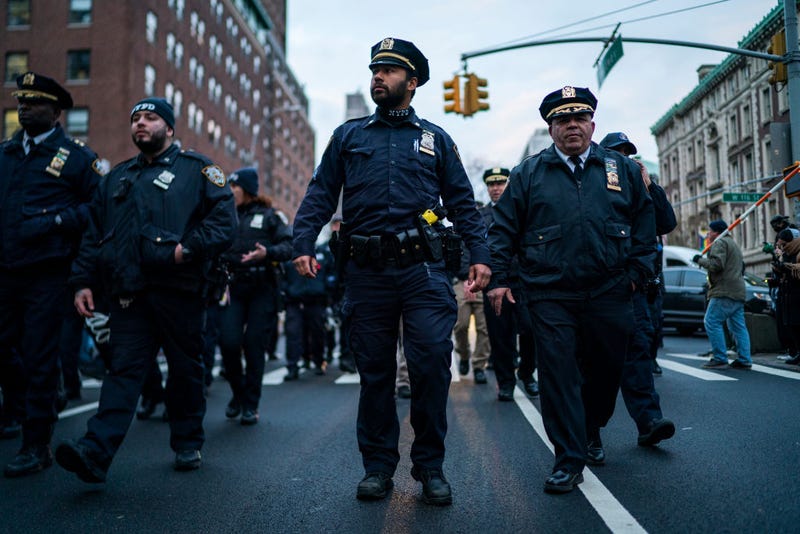
NEW YORK (1010 WINS/WCBS 880) — A judge ruled on Wednesday that New York City can move forward on an agreement to transform the way the NYPD responds to large demonstrations and protesters after throwing out arguments from the police officers’ union that claim the new practices would make the city less safe for cops and the public.
US District Judge Colleen McMahon ruled that the New York City Police Benevolent Association’s (PBA) motion rejecting the agreement lacked merit. The reforms, a result of the Payne v. de Blasio settlement, has now been entered by the court and will go into effect.
In this settlement, NY Attorney General Letitia James, in conjunction with the Legal Aid Society and the New York Civil Liberties Union, formed an agreement to resolve lawsuits filed by a variety of bodies regarding the NYPD’s alleged wrongful arrests and excessive use of force against protestors in relation to the Black Lives Matter movement during the summer of 2020.
The agreement states that the NYPD must comply with three phases to overhaul its protest response protocol, which will be overseen by a committee made up of the Office of the Attorney General and other city legal bodies.
The ruling comes during a time of mass protest across the city, with over 600 occurring since the Oct. 7 Hamas attack on southern Israel. Demonstrations are expected on Wednesday in response to President Joe Biden’s visit to NYC.
"We know the NYPD cannot police itself, and we won’t let the PBA destroy a commonsense settlement to address the violence and reckless over-policing New Yorkers experienced firsthand when standing up for Black lives in the summer of 2020," Deputy Legal Director at the NYCLU Molly Biklen and Staff Attorney with the Legal Aid Socety’s Criminal Law Reform Unit Jennvine Wong said in a statement.
The PBA response was one of frustration, with union President Patrick Hendry stating that "The next time a peaceful protest is hijacked by rioters, the next time our roads, bridges or subways are shut down by agitators, New Yorkers should remember that their city chose to encourage these disruptions by signing onto this misguided settlement."
Judge McMahon approved the agreement in September, but backtracked at the behest of the PBA, which requested the chance to argue against the agreement out of concern for officer safety.
But in court on Wednesday, Judge McMahon determined the PBA had failed to certify this claim by implementing the agreement’s tactics, which require a gradual response to protests, the New York Times reported.
"There is simply no evidence, let alone substantial evidence, that the public interest would be disserved if the settlement were approved," Judge McMahon said.
The agreement sets up a four-tier response system for protests that inevitably vary in size, scale and conditions. At each tier, officers are expected to attempt de-escalation strategies.
During tier one, the NYPD can deploy a trained protest liaison from the Community Affairs Bureau who will communicate with protesters and help facilitate. Patrol officers may be deployed to reroute traffic and facilitate the protest, excluding officers and equipment from the Strategic Response Group.
In tier two, protest liaisons can be dispatched and additional officers can be stationed out of sight of the protest if crowd size becomes a concern, or there is a belief that criminal activity is imminent. The rise of individualized cause for arrest can escalate the response to tier three, which include the deployment of an appropriate number of officers to address those being unlawful.
The final tier shall only be deployed if protesters seek to gain unauthorized entry to a sensitive location or are blocking others’ access, or if widespread criminality is on display beyond the scope of individual arrests. Then, the commander may move to disperse the crowd with audible orders and clearly identified points of exit.
The oversight committee will check-in on the department’s implementation of agreement strategies over a multi-year period, the NYCLU said.
